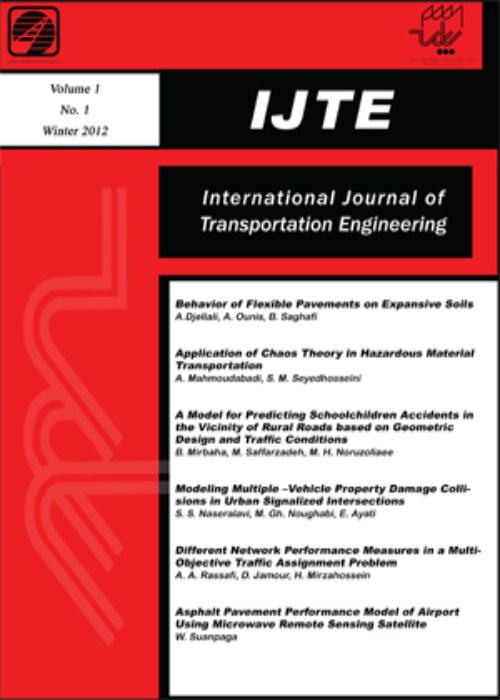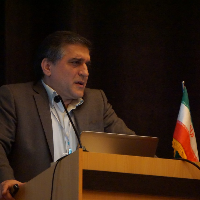A Monte Carlo Simulation of Chain Reaction Rear End Potential Collisions on Freeways
Author(s):
Abstract:
In recent research on modelling road collisions very little attention has been paid to rear-end chain reaction collisions, which is characterized by more than two vehicles involved in a collision at the same time. The core aim of the present research is to develop a methodology to estimate such potential collision probabilities based on a proactive perspective, where deceleration rate to avoid collision is used as a surrogate safety measure. In a rear-end chain reaction collision the following driver’s response time and the vehicle’s maximum available deceleration rate are both assumed as stochastic causes of collision. To consider the uncertainty of variables in estimating the N-vehicle rear-end collision, a methodology based on Monte Carlo simulation is proposed. To show the applicability of the proposed methodology, the NGSIM trajectory database of I-80 interstate freeway is used. The probability density function for drivers’ response time is developed through the analysis of 1534 car following situations detected in 45 minutes of movement. The potential risk of two to five vehicle reaction collisions in a five vehicle platoon is estimated by running the simulation through 20 thousand substitutions of randomized generation values drawn from probability density function of response time and maximum available deceleration rate in a following outcome function. Results show that avoiding rear-end collision should be considered as a shared responsibility among the drivers in the platoon. As expected, the methodology considers probability of N vehicles colliding at the same time decreasing as N increases. N-vehicle collision is shown to be directly related to the clearance between the following vehicles within the platoon and the speed of individual vehicles as well as the drivers’ reaction time and the maximum deceleration rate available in individual vehicles. The proposed methodology considers all vehicles in the platoon to estimate the risk of potential chain reaction collisions, rather than just simply focusing only on the two leading and following vehicles. Therefore, the proposed methodology is believed to act more effectively than the ordinary methods, particularly if it is used to alarm drivers of vehicles synchronized based on vehicular ad hoc network (VANET) methodologies.
Keywords:
Language:
English
Published:
International Journal of Transportation Engineering, Volume:2 Issue: 3, Winter 2015
Pages:
213 to 230
magiran.com/p1408968
دانلود و مطالعه متن این مقاله با یکی از روشهای زیر امکان پذیر است:
اشتراک شخصی
با عضویت و پرداخت آنلاین حق اشتراک یکساله به مبلغ 1,390,000ريال میتوانید 70 عنوان مطلب دانلود کنید!
اشتراک سازمانی
به کتابخانه دانشگاه یا محل کار خود پیشنهاد کنید تا اشتراک سازمانی این پایگاه را برای دسترسی نامحدود همه کاربران به متن مطالب تهیه نمایند!
توجه!
- حق عضویت دریافتی صرف حمایت از نشریات عضو و نگهداری، تکمیل و توسعه مگیران میشود.
- پرداخت حق اشتراک و دانلود مقالات اجازه بازنشر آن در سایر رسانههای چاپی و دیجیتال را به کاربر نمیدهد.
In order to view content subscription is required
Personal subscription
Subscribe magiran.com for 70 € euros via PayPal and download 70 articles during a year.
Organization subscription
Please contact us to subscribe your university or library for unlimited access!



